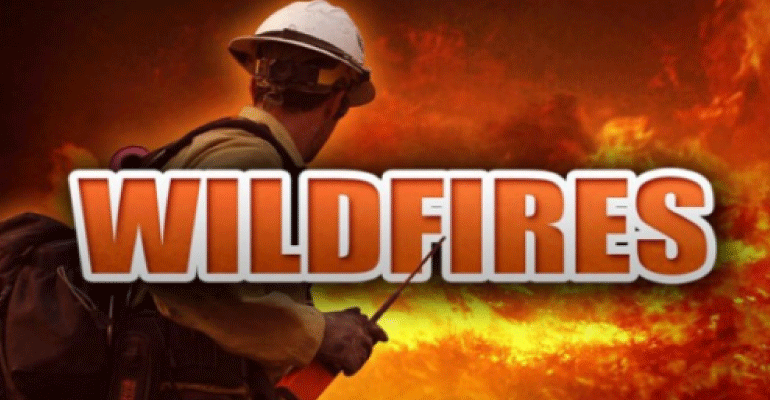
Arizona and Penn State studied fire regimes in the Sierra Nevada Mountain of California for the period 1600 to 2015 and found that land use changes, not climate, were the principal controlling factors.
This result was apparently a surprise to the researchers since they set out to correlate climate with the fires.
“Initially, we did work to see if we could develop long-lead forecasts for fire in the area — six to 18 months in the future — using climate patterns such as El Niño,” said Alan H. Taylor, professor of geography, Penn State. “This would be a significant help because we could place resources in the west if forecasts indicated it would be dry and the southeast would be wet. However, the climate relationships with fire did not consistently track.”
“We were expecting to find climatic drivers,” said lead co-author Valerie Trouet, a UA associate professor of dendrochronology. “We didn’t find them.”
The researchers used tree ring data from 29 sites, historical documents, and 20th Century records of areas burned.
From the UofA press release:
For the years 1600 to 2015, the team found four periods, each lasting at least 55 years, where the frequency and extent of forest fires clearly differed from the time period before or after. The team found the fire regimes corresponded to different types of human occupation and use of the land: the pre-settlement period to the Spanish colonial period; the colonial period to the California Gold Rush; the Gold Rush to the Smokey Bear/fire suppression period; and the Smokey Bear/fire suppression era to present. Finding that fire activity and human land use are closely linked means people can affect the severity and frequency of future forest fires through managing the fuel buildup and other land management practices — even in the face of rising temperatures from climate change.
From the Penn State press release:
Early fires, because they were more frequent, with less fuel build-up, were “good” fires. They burned through the forest, consumed understory fuels and left the majority of trees unharmed. The Native American mosaic of burned and unburned areas prevented fires from continuously spreading.
From 1776 to 1865 the second fire regime, characterized by Spanish colonialism and the depopulation of Native Americans in the area, shows more land burned. European settlers brought diseases against which Native Americans had no immunity and the population suffered. The Spanish built a string of missions in California beginning in 1769 and relocated remaining Native Americans to the mission areas. In 1793, there was a ban on burning to preserve forage, disrupting the pre-colonial Native American burning practices. The incidence of fires became more sensitive to drought and the fire regime changed, creating the time when fires were largest and most closely coupled with climate.
The third fire period is from 1866 to 1903 and was initiated by the California gold rush, when thousands of people poured into the area. Settlement by large numbers of new immigrants began to break up the forest fuel and the creation of large herds of animals, especially sheep, removed large amounts of understory and changed the fire regime.
The fourth fire period began in 1904 and is linked to the federal government’s policy of fire suppression on government lands. The reason pre-colonial and Spanish colonial fire levels were so much higher than today is that the current fire regime is one of suppressions with an extremely low incidence of fires compared to the past. However, suppression over the last century has allowed fuel to build up on the forest floor and opened the door for “bad” fires that destroy the forest canopy and burn large areas of land.
(UofA press release, Penn State press release, paper abstract )
This finding contradicts an alarmist story printed in the Arizona Daily Star this past October (see third reference below).
See also:
- Media hype about forest fires and global warming
- Wildfires and Warming – It’s complicated
- Claim: “Worsening Wildfires Linked to Temp Rise”
Note to readers:
Index with links to all my ADI articles: http://wp.me/P3SUNp-1pi
My comprehensive 28-page essay on climate change: http://wp.me/P3SUNp-1bq
